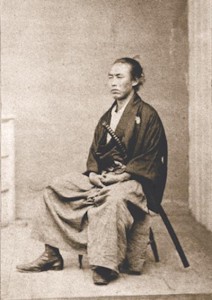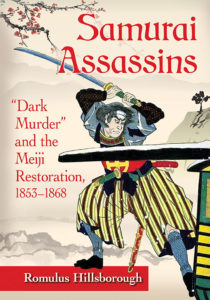
This year marks the 150th anniversary of the assassination of Sakamoto Ryōma, which is the subject of Part III of my new book, Samurai Assassins. The murder of a genius of Ryōma’s caliber could not but have altered history. In writing the first in-depth account and analysis of the incident in English, I scoured all available important sources, including primary sources: Ryōma’s letters; testimonies and writings by, and interviews of, his alleged assassins; and accounts from people who were either present at the assassination scene or who arrived shortly after the fact. Excerpted below (without footnotes) is the opening paragraph of Part III (Chapter 15: Ryōma’s Greatest Achievements):
“Since Sakamoto was no good for the Bakufu or the Imperial Court…, I thought we had to kill him.” These words of Imai Nobuo of the Kyōto Mimawarigumi, a Bakufu security force, are as ironic as they are tragic—and in fact Sakamoto Ryōma’s assassination is the greatest tragedy of the Meiji Restoration. Sakamoto Ryōma and Nakaoka Shintarō were assassinated on the night of Keiō 3/11/15 (1867), about a month after the shōgun had announced his intention to abdicate and restore Imperial rule based on Ryōma’s peace plan. After the shōgun’s historical announcement, the situation in Kyōto remained dangerous and volatile, with samurai “thirsty for blood” gathered there from all over the country, recalled Watanabé Atsushi, another Mimawarigumi man who, like Imai, later claimed to have killed Ryōma. “We couldn’t let our guard down.” Whenever they were out on the street they were “vigilant” and “kept the mouths of our sword sheaths loose,” ready to draw the blades at any time.

